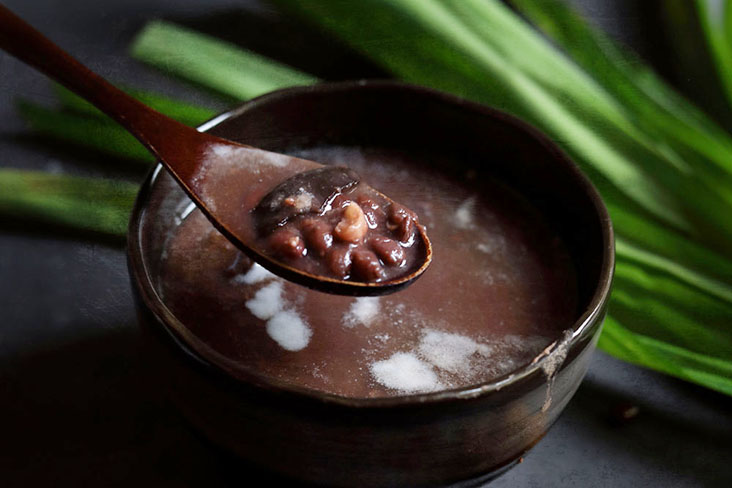KUALA LUMPUR, June 27 — Trying to find a decent bowl of red bean soup can be like looking for a needle in a haystack sometimes.
The stuff we find outside our homes can be disappointing more often than not. Too watery, more liquid than red beans. Too sweet. Not fragrant enough. The list goes on.
One can't help but wonder why the tong sui (Cantonese dessert soups) we pay for in canteens and food courts, in street side stalls and air-conditioned shopping malls, can’t compare to the humble bowls our mothers and grandmothers used to dish up at home.
Well, why not go straight to the source and get an answer? During a phone call to my madre one day, I asked her what was the secret recipe or ingredient or method? Something ought to be different. It sure tastes different.
Dear readers, there is no Mother’s Day gift that will delight your Mum more than asking her for a recipe. Trust me on that. Not diamonds or roses. Not chocolates or gold.
Ask her why something she cooks tastes miles better than anything we can find outside. Then sit back and bask in her sheer joy. (And be prepared for a long answer...)
In any case, the answer I received was shockingly simple. My Mum asked me patiently, “Did they add tangerine peel? You can always tell when they leave it out. It won’t taste or smell the same.”
And so it is.
Red bean soup requires little if you go for the basic version: dried red beans, sugar and water. That’s it, really. The result qualifies as red bean soup (or hung dau sui in Cantonese) but whether it passes the taste test is another matter.

Traditionally, a proper Cantonese red bean soup ought to use rock sugar, not granulated sugar which is too sweet. Lotus seeds (linzi in Cantonese), rich in protein and B vitamins, are another key ingredient. Our family always cooks the soup with pandan leaves to enhance the tong sui’s aroma and serve with warm santan (coconut cream) on the side for added richness.
But yes, the missing piece here is literally a piece of dried tangerine peel or chan pei. There is a subtle citrus fragrance that makes every spoonful of homemade red bean soup sublime.
The best versions from reputable Chinese herbal shops are made from the peels of Xinhui mandarins which are dried in the sun. Unlike supermarket oranges, which are favoured for itheir sweetness, Xinhui mandarins are infamous for their tart flesh. A little goes a long way.
So, that’s it. But how could something so small make such a big difference? Maybe that is the lesson here. Details do matter.
RED BEAN SOUP WITH DRIED TANGERINE PEEL
Dried red beans are hard on account of their dehydrated state. Getting them soft enough that they almost dissolve in the tong sui is almost always the first step.
How we get there is a matter of preference as there are several techniques. Some advise freezing the soaked red beans as the water inside will turn to ice, breaking down the beans when we cook them later. Others suggest dry-frying the beans in a wok so it’s partially cooked.
To each their own.

I find simply soaking the dried red beans overnight to be the easiest method. The resultant beans are not only rehydrated but disintegrate beautifully when cooked to create a lush, smooth hung dau sui.
The more diligent amongst us may want to try sun drying their own citrus peels from the oranges they buy for eating. Saves money. Just be careful to remove the bitter white pith, which takes a bit of work. You’d probably have to double the amount of peels used in the recipe (possibly more) as these won’t be as fragrant as the proper chan pei.
Ingredients: Red bean soup
300 g dried red beans, soaked in water overnight
1500 ml water, first boil
1500 ml water, second boil
30 g dried lotus seeds, soaked
4 fresh pandan leaves, tied in a bunch
1 piece dried tangerine peel, soaked
100 g rock sugar
A pinch of salt
Ingredients: Coconut cream
250 ml santan
A pinch of salt
Method
First soak the dried red beans in enough water to cover all of it overnight. The dried lotus seeds and dried orange peel only need to be soaked in cold water for 30-40 minutes before using.
After draining the soaked red beans, add them to a large pot together with fresh water. Bring to a boil and then immediately drain. Refill the pot of drained beans with more water and bring to a boil again.
Once the water is boiling, add the lotus seeds, pandan leaves and dried tangerine peel. (If you make your own dried orange peel, you may need to use 2-3 pieces here as these aren’t as aromatic.)

Reduce the heat to a simmer. Allow to simmer for about 2 hours until the beans have softened and the liquid reduced to your liking.
While the red bean soup is cooking, you can prepare the coconut cream by heating the santan and salt in a smaller pot. Bring it almost to a boil, then turn off the heat. Let it sit, covered, until the red bean soup is ready.
Once the red bean soup is the right consistency, season with rock sugar and a pinch of salt. Stir until all the chunks of rock sugar have dissolved. Remove from heat. Serve immediately in bowls with the coconut cream separately (so each person can add as much as they like).
For more Weekend Kitchen stories and recipes, visit https://lifeforbeginners.com/weekend-kitchen/.






















